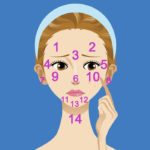The elimination diet is a method of excluding certain foods or food groups from your diet to identify any food intolerances or allergies. Join us to learn more about the elimination diet below.
1 What is an Elimination Diet?
The elimination diet, or Elimination Diet, is a method that involves removing certain foods or food groups that may be causing digestive issues or allergies. After a period of elimination, you will reintroduce these foods to determine if they are truly the cause of your allergies.
 The elimination diet eliminates potentially allergenic foods
The elimination diet eliminates potentially allergenic foods
The main goal of this diet is to identify foods that the body cannot tolerate or that cause health issues. However, it is recommended to seek the guidance of a nutritionist when following this diet.
2 6 Benefits of the Elimination Diet
Identify Allergenic Foods
 Identify allergenic foods
Identify allergenic foods
Some people may not know which foods they are allergic to, making it difficult to treat allergies. This method will help you pinpoint the foods that trigger your allergies and provide a more effective treatment.
Reduce Irritable Bowel Symptoms
 Reduce irritable bowel symptoms
Reduce irritable bowel symptoms
Following an elimination diet can significantly increase the number of beneficial bacteria in the gut, helping to improve irritable bowel syndrome symptoms.
Support for Leaky Gut Syndrome
 Support for leaky gut syndrome
Support for leaky gut syndrome
Leaky gut can be a cause of allergies, infections, and nutrient malabsorption. The elimination diet can help improve the symptoms associated with leaky gut syndrome.
Reduce Skin Issues like Rashes, Acne, and Hives
 Reduce skin issues
Reduce skin issues
Skin problems like rashes, acne, itching, and eczema can be linked to undiagnosed food allergies. The elimination diet can help identify allergenic foods and improve these skin conditions.
Prevent and Treat Autism and ADHD
 Prevent and treat autism and ADHD
Prevent and treat autism and ADHD
Allergenic foods like pasteurized milk and wheat can increase the risk of autism and ADHD. Lectins in these foods can cause leaky gut, recirculation in the blood, and trigger inflammation.
Reduce Migraines
 Reduce migraines
Reduce migraines
The elimination diet is also an effective therapeutic strategy for patients with frequent migraines, as allergenic and irritating foods are eliminated.
3 How to Implement an Elimination Diet
Most elimination diets last between 3-6 weeks, and it takes 3-4 weeks after stopping consumption to determine if the body has developed antibodies against the excluded foods. You can follow these steps to implement an elimination diet:
Step 1 Identify the Food Groups to Exclude
Determine the food groups you believe your body cannot tolerate. You can base this on your personal experiences and a list of common allergenic foods.
 Identify the food groups to exclude
Identify the food groups to exclude
Step 2 Eliminate the Identified Food Groups
Next, eliminate the selected foods for 3-6 weeks. Read food labels carefully and avoid consuming foods that contain the ingredients you are trying to exclude.
 Eliminate the identified food groups
Eliminate the identified food groups
Additionally, observe and note any changes in your body during this process. Make sure to include nutrient-rich foods in your diet to ensure adequate nutrient intake.
Step 3 Identify Allergenic Foods
After 3-6 weeks, gradually reintroduce small amounts of the excluded foods into your regular diet, one food per week, and observe your body’s response. If there are no physical or mental reactions, that food group is unlikely to cause allergies.
 Identify allergenic foods
Identify allergenic foods
The most important aspect of this diet is ensuring your body receives essential nutrients while excluding certain food groups. Additionally, remain patient during this discovery process, as our bodies are constantly changing, and past results may not apply to the present.
This article shared our insights on the elimination diet, its benefits, and how to implement it. We hope you found it helpful. Thank you for reading.
Source: Health+ Magazine



































